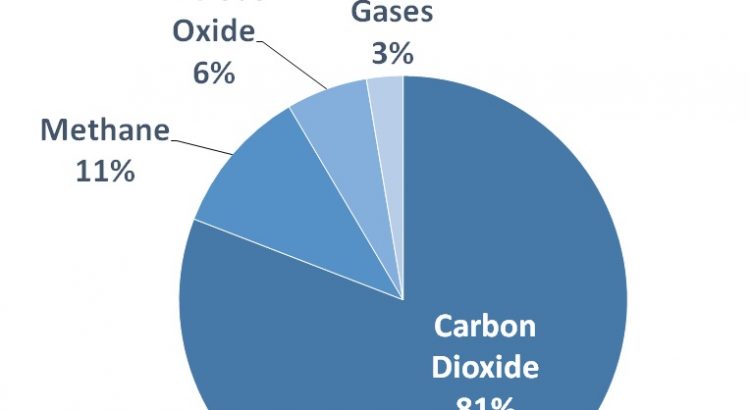Compost coffee grounds food scraps reduce methane and CO2 production, Methane produced by anaerobic digestion in landfills and lack of oxygen
Methane was 11 percent of US greenhouse gas emissions in 2014.
From the City of Greensboro.
“Composting
Nearly half of the trash discarded by Americans every year is made up of organic materials that could have been composted. In Guilford County, more than 34,000 tons of food waste is thrown in the trash. Instead of tossing out organic materials such as fruit and vegetable scraps, consider composting them along with yard debris, like leaves and grass clippings.
What is Compost?
Compost is decomposed organic matter. Common composting materials consist of food scraps, shredded twigs, leaves and straw, and animal manure. The compost process requires four main components: organic matter, microbes, oxygen, and time. The final product consists of a dark, stable material that improves soil quality
Why Compost?
Compost can increase crop yields, improve soil structure, and attract beneficial organisms that suppress plant diseases. Adding compost to soil also helps prevent erosion and stormwater runoff, reduces the need for fertilizers and pesticides and can help remove contamination from soil.
By composting organic waste, we can extend the life of our landfills, and reduce the amount of methane produced. Methane, a harmful greenhouse gas, is released into the atmosphere when food is broken down without the presence of oxygen.”
http://www.greensboro-nc.gov/index.aspx?page=3903
From the EPA.
“Overview of Greenhouse Gases”
“Gases that trap heat in the atmosphere are called greenhouse gases. This section provides information on emissions and removals of the main greenhouse gases to and from the atmosphere. For more information on the science of climate change and other climate forcers, such as black carbon, please visit Climate Change Science.
- : Carbon dioxide enters the atmosphere through burning fossil fuels (coal, natural gas, and oil), solid waste, trees and wood products, and also as a result of certain chemical reactions (e.g., manufacture of cement). Carbon dioxide is removed from the atmosphere (or “sequestered”) when it is absorbed by plants as part of the biological carbon cycle.
- : Methane is emitted during the production and transport of coal, natural gas, and oil. Methane emissions also result from livestock and other agricultural practices and by the decay of organic waste in municipal solid waste landfills.
- : Nitrous oxide is emitted during agricultural and industrial activities, as well as during combustion of fossil fuels and solid waste.
- : Hydrofluorocarbons, perfluorocarbons, sulfur hexafluoride, and nitrogen trifluoride are synthetic, powerful greenhouse gases that are emitted from a variety of industrial processes. Fluorinated gases are sometimes used as substitutes for stratospheric ozone-depleting substances (e.g., chlorofluorocarbons, hydrochlorofluorocarbons, and halons). These gases are typically emitted in smaller quantities, but because they are potent greenhouse gases, they are sometimes referred to as High Global Warming Potential gases (“High GWP gases”).
Each gas’s effect on climate change depends on three main factors:
How much of these gases are in the atmosphere?
Concentration, or abundance, is the amount of a particular gas in the air. Larger emissions of greenhouse gases lead to higher concentrations in the atmosphere. Greenhouse gas concentrations are measured in parts per million, parts per billion, and even parts per trillion. One part per million is equivalent to one drop of water diluted into about 13 gallons of liquid (roughly the fuel tank of a compact car). To learn more about the increasing concentrations of greenhouse gases in the atmosphere, visit the Causes of Climate Change and the Climate Change Indicators: Atmospheric Concentrations of Greenhouse Gases pages.
How long do they stay in the atmosphere?
Each of these gases can remain in the atmosphere for different amounts of time, ranging from a few years to thousands of years. All of these gases remain in the atmosphere long enough to become well mixed, meaning that the amount that is measured in the atmosphere is roughly the same all over the world, regardless of the source of the emissions.
How strongly do they impact global temperatures?
Some gases are more effective than others at making the planet warmer and “thickening the Earth’s blanket.”
For each greenhouse gas, a Global Warming Potential (GWP) has been calculated to reflect how long it remains in the atmosphere, on average, and how strongly it absorbs energy. Gases with a higher GWP absorb more energy, per pound, than gases with a lower GWP, and thus contribute more to warming Earth.”
https://www.epa.gov/ghgemissions/overview-greenhouse-gases




